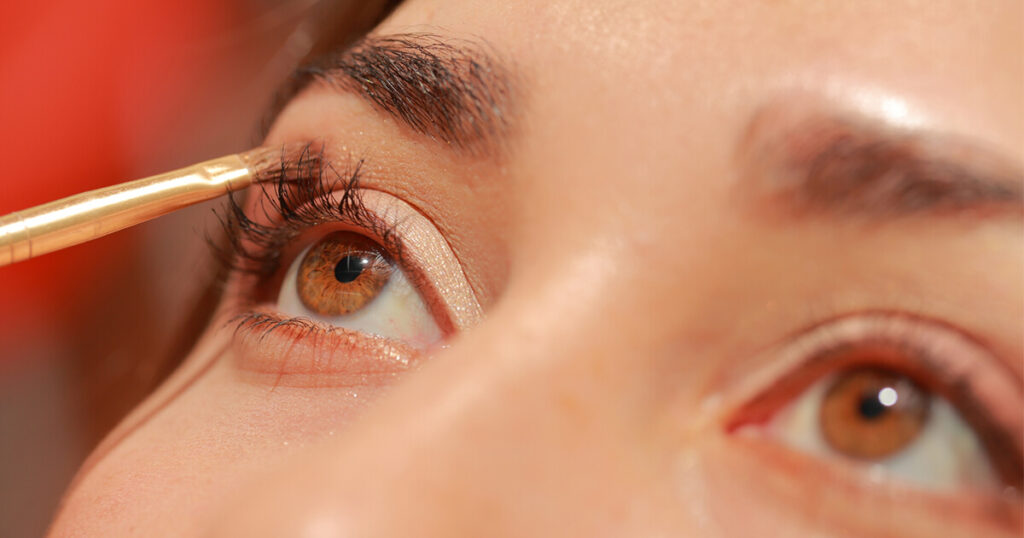Eyelid asymmetry can be a cause of concern for many individuals, affecting both appearance and eye function. While it’s relatively common to have minor differences between the two eyes, more noticeable asymmetry could be linked to factors like genetics, aging, or underlying medical conditions. Understanding the causes and potential treatments can help alleviate worries and provide actionable steps for improvement.
Several factors can contribute to the development of asymmetrical eyelids. These include congenital conditions, trauma, or even issues like Bell’s palsy. Cosmetic concerns aside, severe asymmetry may also impact vision and eyelid functionality. Various treatment options, ranging from non-invasive methods like makeup techniques to surgical interventions, can address this condition.
For those looking to explore solutions, it’s essential to consult with a healthcare professional to determine the best approach. Treatments such as eyelid surgery or targeted exercises can offer significant improvements. More detailed information on causes and treatments can be found through resources like All About Vision.
Anatomy of the Eyelid
The eyelid is a complex structure composed of various layers and muscles that work together to protect the eye and control eyelid movement. Understanding the detailed anatomy is crucial for diagnosing and treating eyelid asymmetry.
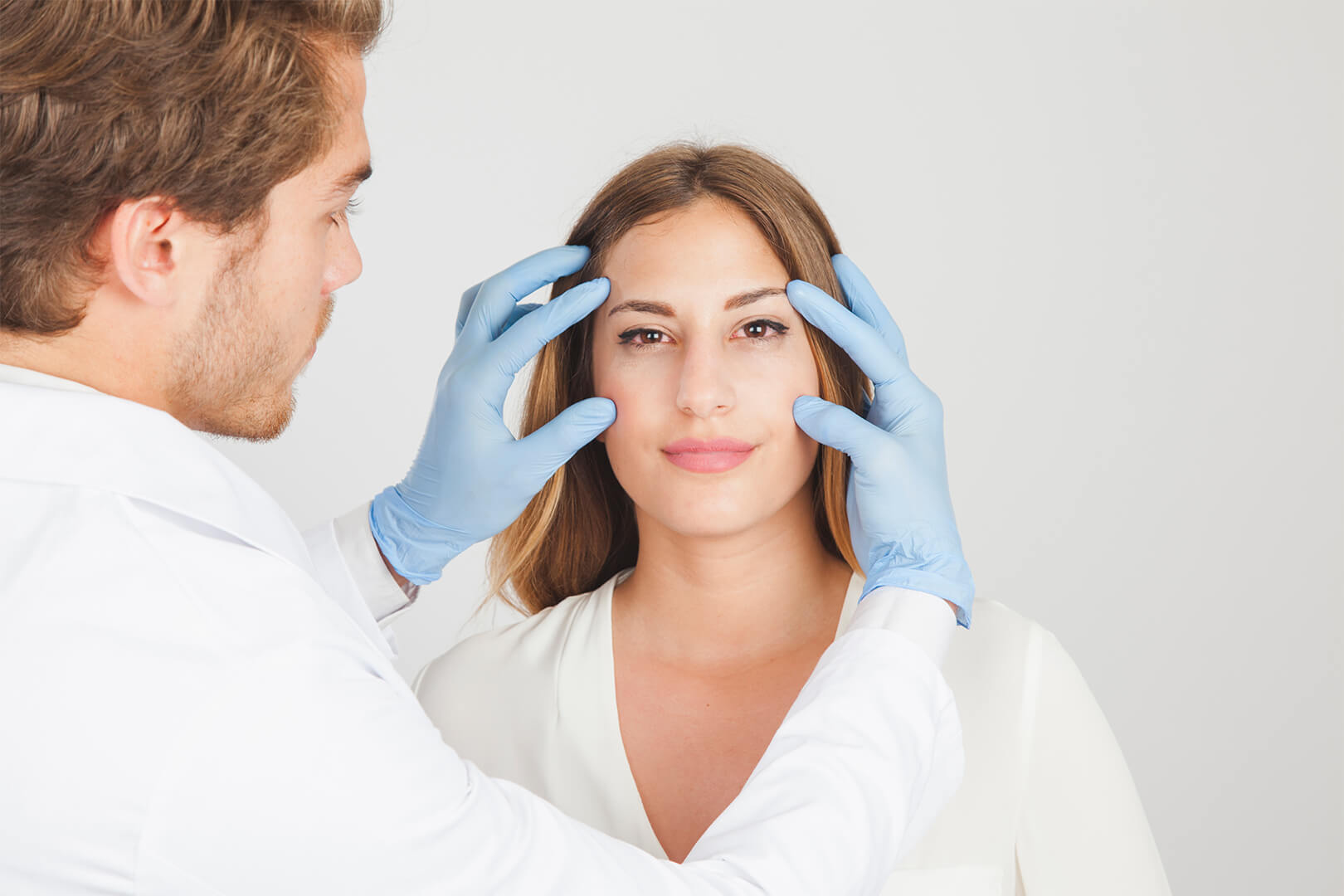
Structural Overview
The upper and lower eyelids are composed of several layers, including skin, muscle, connective tissue, and glands. The outermost layer is the skin, which is thin and delicate. Beneath the skin lies the orbicularis oculi muscle, enabling the eyelid to close.
Key muscles include the levator palpebrae superioris and Müller’s muscle, responsible for lifting the upper eyelid. The inner layer, or tarsal plate, provides structural support and houses the meibomian glands, which secrete oils to lubricate the eye. Blood vessels and nerves run throughout, ensuring proper function and responsiveness.
Function and Movement
Eyelid movement involves precise coordination between muscles and nervous signals. The orbicularis oculi muscle allows the eyelid to close, while the levator palpebrae superioris and Müller’s muscle work to lift and open the upper eyelid.
Movement is vital for protecting the eye from debris and distributing tears across the eye’s surface. Eyelid muscles receive signals from the facial nerve, ensuring rapid responses to stimuli. Any asymmetry in these movements or functions could indicate underlying neurological or muscular issues, leading to noticeable differences in eyelid positioning.
The complex interplay of muscles, nerves, and structural components highlights the importance of the eyelid in both function and aesthetics. Understanding these elements is essential for addressing conditions like eyelid asymmetry effectively.
Causes of Eyelid Asymmetry
Eyelid asymmetry can stem from various sources including congenital factors, acquired conditions, traumatic injuries, and neurological disorders.
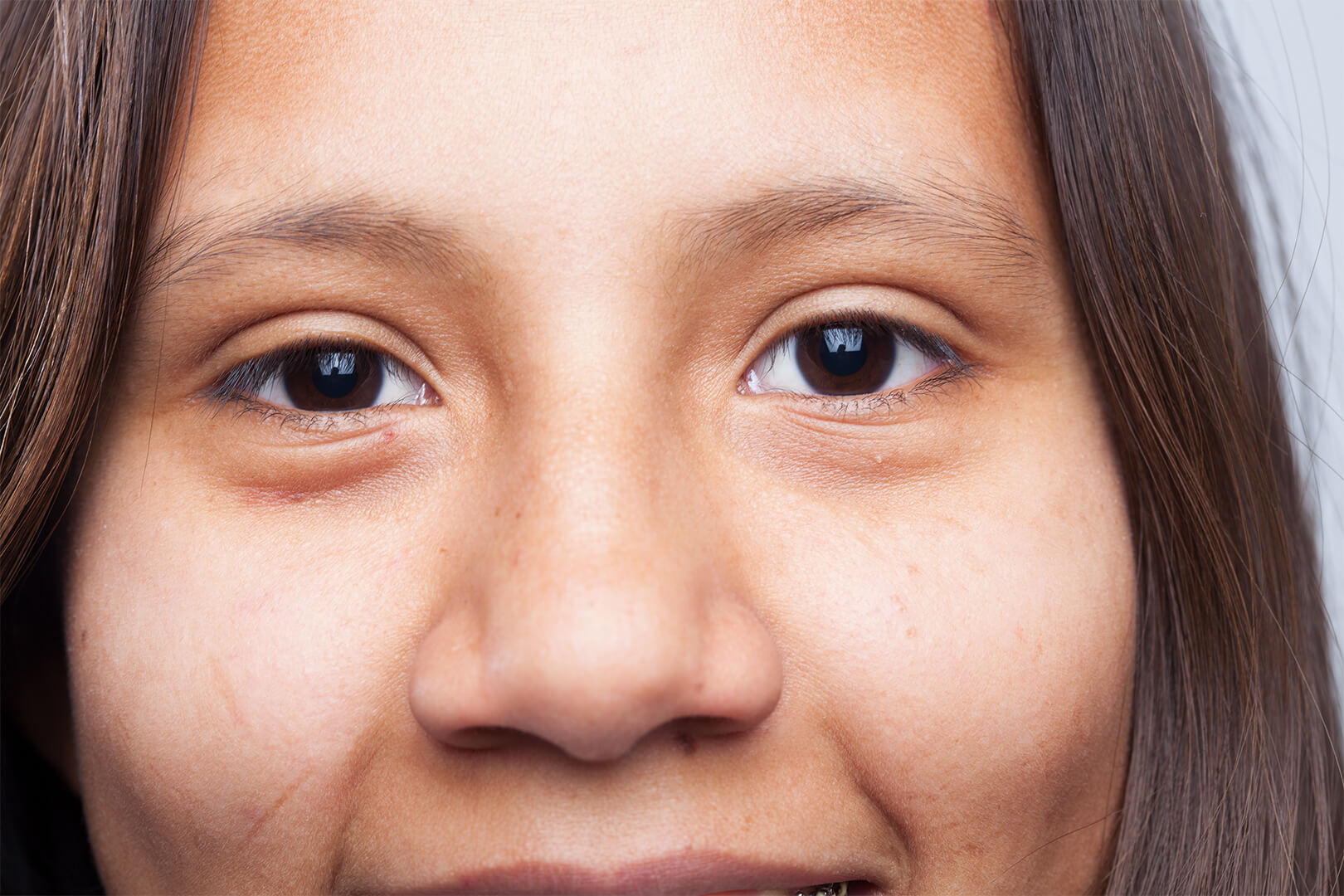
Congenital Factors
Congenital factors often result in eyelid asymmetry due to genetic predispositions or developmental anomalies. One common cause is ptosis, where the upper eyelid droops from birth. This condition can affect one or both eyes, leading to asymmetry.
Another congenital issue is a lack of an eyelid crease, more prevalent in certain ethnicities like Asians. About 50% of people born with Asian heritage may not have well-defined eyelid creases, contributing to uneven eyelids.
Congenital eyelid asymmetry can vary in severity and may require surgical intervention for correction, especially if it impairs vision.
Acquired Conditions
Acquired conditions that cause eyelid asymmetry usually develop later in life due to environmental or health-related factors. Aging is a significant contributor, as the skin loses elasticity causing the eyelids to sag unevenly.
Medical conditions such as thyroid eye disease can also lead to asymmetry. This autoimmune disorder causes inflammation and affects the muscles around the eyes, leading to uneven eyelids.
Other factors include habitual eye-rubbing and the long-term use of contact lenses, which can impact eyelid symmetry over time.
Traumatic Injuries
Traumatic injuries to the face or eye area often lead to eyelid asymmetry due to damage or scarring. Accidents, burns, or surgical procedures can affect the delicate skin and muscles around the eyelids, resulting in unevenness.
A fractured orbital socket can also contribute to asymmetric eyelids, altering the muscle and tissue alignment around the eye.
Post-injury, reconstructive surgery may be necessary to restore symmetry, depending on the extent of the damage.
Neurological Disorders
Certain neurological disorders can cause eyelid asymmetry by affecting the nerves responsible for eyelid movement. Bell’s palsy is a condition wherein inflammation or infection of the facial nerve results in paralysis on one side of the face, affecting eyelid symmetry.
Another example is myasthenia gravis, an autoimmune disorder impacting nerve-muscle communication. This condition often manifests as ptosis, leading to one eyelid drooping lower than the other.
Early diagnosis and treatment of these neurological conditions are crucial to manage symptoms and minimize asymmetry.
Diagnosis of Eyelid Asymmetry
Diagnosis of eyelid asymmetry often involves a combination of clinical and imaging techniques. These methods help identify the underlying causes and determine the most effective treatment options.
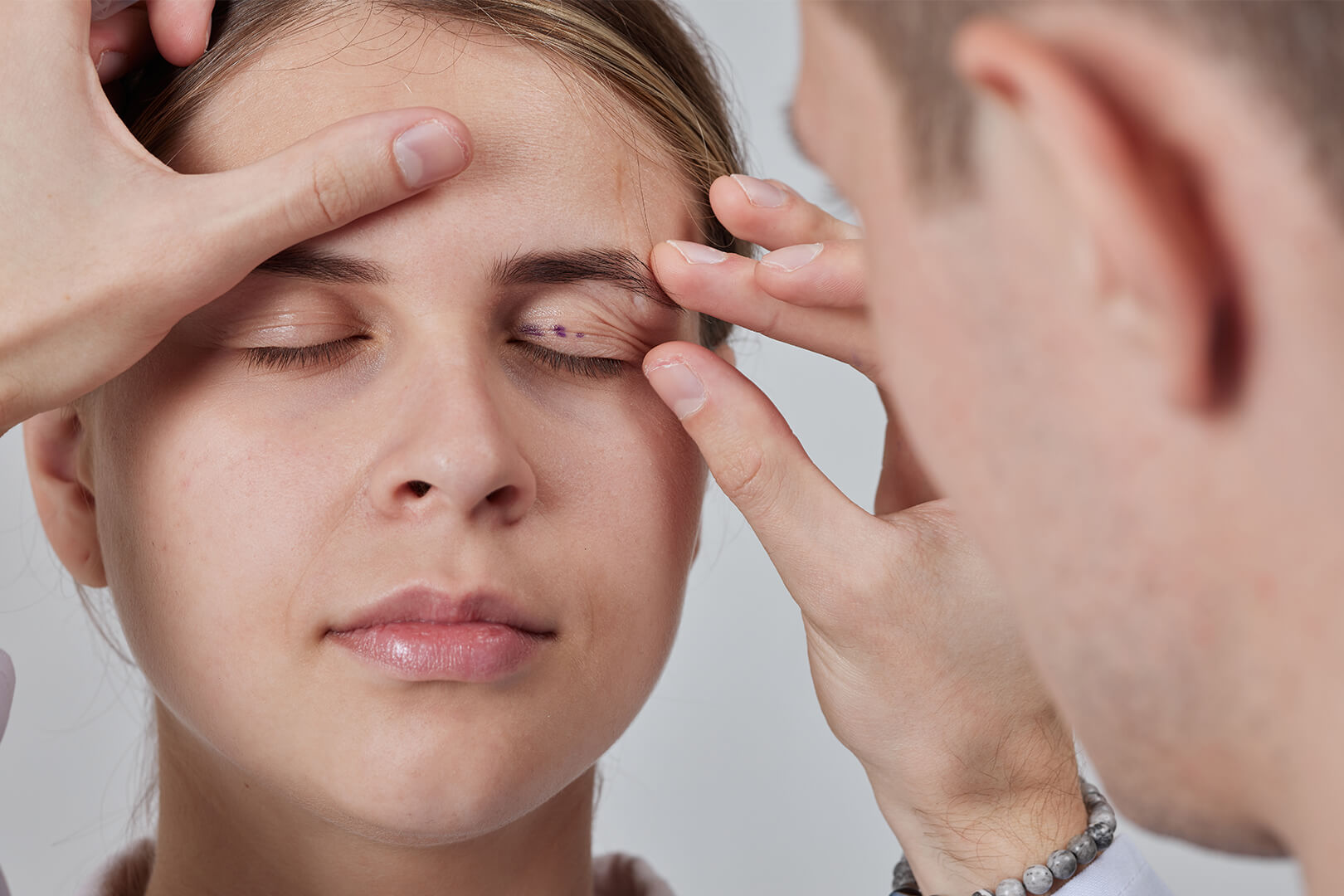
Clinical Examination
A thorough clinical examination is crucial for diagnosing eyelid asymmetry. The clinician will perform a detailed assessment of the patient’s medical history, including any family history of conditions like Bell’s palsy.
Observation of the eyes and eyelids will be conducted to note any visible differences. This can involve measuring eyelid position, the margin reflex distance (MRD), and the palpebral fissure height. Special attention will be given to the function of facial muscles.
The practitioner might also employ specific tests such as the Schirmer test to measure tear production. Any signs of underlying conditions, like ptosis or muscle weakness, will be documented. This detailed clinical evaluation helps in forming a diagnosis and planning suitable interventions.
Imaging Techniques
Imaging techniques are used to provide a detailed view of the structures surrounding the eyes. Common methods include magnetic resonance imaging (MRI) and computed tomography (CT) scans. These scans can reveal abnormalities in the orbit, eyelid, or surrounding tissues.
For asymmetries caused by tumors or cysts, these imaging methods are invaluable. MRI is particularly useful for soft tissue evaluation, while CT scans excel in assessing bony structures. In some cases, ultrasound may be employed to inspect the eyelid musculature and surrounding areas.
These imaging techniques, alongside clinical examination, ensure a comprehensive diagnostic approach. They are instrumental in identifying underlying issues that may not be immediately apparent through observation alone.
Treatment Options
Addressing eyelid asymmetry involves a range of surgical and nonsurgical treatments, as well as lifestyle modifications. Each approach aims to improve both the functionality and appearance of the eyelids but may differ in terms of invasiveness and recovery time.

Surgical Interventions
Surgical interventions provide a permanent solution for eyelid asymmetry. Blepharoplasty is the most common surgical procedure, which involves removing excess skin, muscle, and sometimes fat from the eyelids. This procedure can correct droopy eyelids and improve symmetry.
Another option is a brow lift, which can adjust the position of the eyebrows to enhance eye symmetry. Orbital surgery may be considered when the asymmetry involves the actual position of the eyeball within the socket. Such surgeries generally require a detailed evaluation and consultation with an oculoplastic surgeon to determine the most appropriate procedure.
Nonsurgical Treatments
For those seeking less invasive options, nonsurgical treatments can offer temporary improvements. Botox injections are often used to lift the eyelids and correct minor asymmetries. Topical eye drops may provide subtle lifting effects, especially in cases where a mild disparity exists.
Additionally, dermal fillers can be injected to balance the volume around the eyes, though these treatments usually need periodic maintenance. At-home treatments like eyelid tapes or adhesive strips can offer a temporary fix to uneven eyelids but lack long-term effectiveness.
Lifestyle Modifications
Lifestyle modifications can sometimes help manage or improve mild eyelid asymmetry. Proper sleep and hydration are crucial as they can reduce puffiness and unevenness around the eyes. Regular use of eye creams containing ingredients like retinol or hyaluronic acid may enhance skin elasticity and overall eye appearance.
Facial exercises aimed at strengthening the muscles around the eyes may also offer minimal improvements. Avoiding allergens and using hypoallergenic makeup can prevent exacerbation of eyelid issues. While these changes may not drastically alter eyelid asymmetry, they contribute to better overall eye health.
Psychological Impact and Quality of Life
Eyelid asymmetry can significantly affect an individual’s psychological well-being. When asymmetry is noticeable, it may lead to self-consciousness and lower self-esteem. This can be particularly distressing for those in social or professional settings, where physical appearance often impacts perceptions and interactions.

Patients with eyelid asymmetry frequently experience anxiety and emotional distress. They may feel embarrassed or shy about their appearance, leading to social withdrawal. These feelings can hinder daily activities and reduce overall quality of life.
In children, eyelid asymmetry can contribute to bullying and social isolation. Adults might face challenges in professional environments, where appearance can affect career progression. This can further exacerbate feelings of inadequacy and frustration.
Research Highlights:
- A study noted the prevalence of psychological issues in individuals with eyelid disorders, emphasizing the need for comprehensive treatment plans that address both physical and mental health (Nature).
- The impact on quality of life is profound, affecting aspects such as social interactions, employment opportunities, and general well-being.
- Anophthalmic socket syndrome studies highlight similar psychological challenges and underscore the necessity for mental health support alongside medical treatment.
Gender Differences and Age Factors:
Women may experience higher levels of self-consciousness due to societal standards of beauty. Younger individuals might face developmental and social challenges during formative years.
Addressing eyelid asymmetry often requires a multidisciplinary approach, combining medical, surgical, and psychological therapies to effectively improve both appearance and mental health.
Treatment Considerations:
- Psychological counseling can help patients cope with emotional stress.
- Medical interventions, including surgery, can enhance physical symmetry and boost confidence.
- Support groups and peer networks offer essential emotional support and practical advice.
Post treatment Care
Proper post-treatment care is crucial for optimal recovery and results after eyelid asymmetry correction. Patients should adhere to the following guidelines and advice.

Avoid Strenuous Activities
- For at least one week, patients should avoid heavy lifting, vigorous exercise, and activities that increase blood flow to the face. This helps to minimize swelling and bruising.
Follow Medication Instructions
- Patients may receive prescribed antibiotics or pain medication. It is important to take these as directed to prevent infection and manage discomfort effectively.
Wound Care
- Keep the surgical area clean and apply ointments as instructed by the healthcare provider. This supports healing and reduces the risk of complications.
Cold Compresses
- Applying cold compresses for 10-15 minutes at a time can help reduce swelling and bruising. This should be done several times a day as recommended by the surgeon.
Head Elevation
- Sleeping with the head elevated using extra pillows promotes better circulation and reduces swelling. Maintaining an elevated position throughout the day can also aid recovery.
Protecting the Eyes
- Wear dark sunglasses when going outside to protect the eyes from dust, wind, and sunlight. This is especially important for several weeks post-surgery.
Follow-Up Appointments
- Attending all scheduled follow-up appointments ensures that the surgeon can monitor healing progress and address any concerns promptly.
Avoid Rubbing or Touching
- Patients should avoid rubbing or touching the eyes unnecessarily, as this can disrupt the healing process and introduce bacteria.
By adhering to these guidelines, patients can support a smoother recovery and achieve the desired outcomes from their eyelid asymmetry treatment.
Research and Advances
This section discusses the latest developments in surgical techniques for treating eyelid asymmetry and breakthroughs in medication that are changing how this condition is addressed.
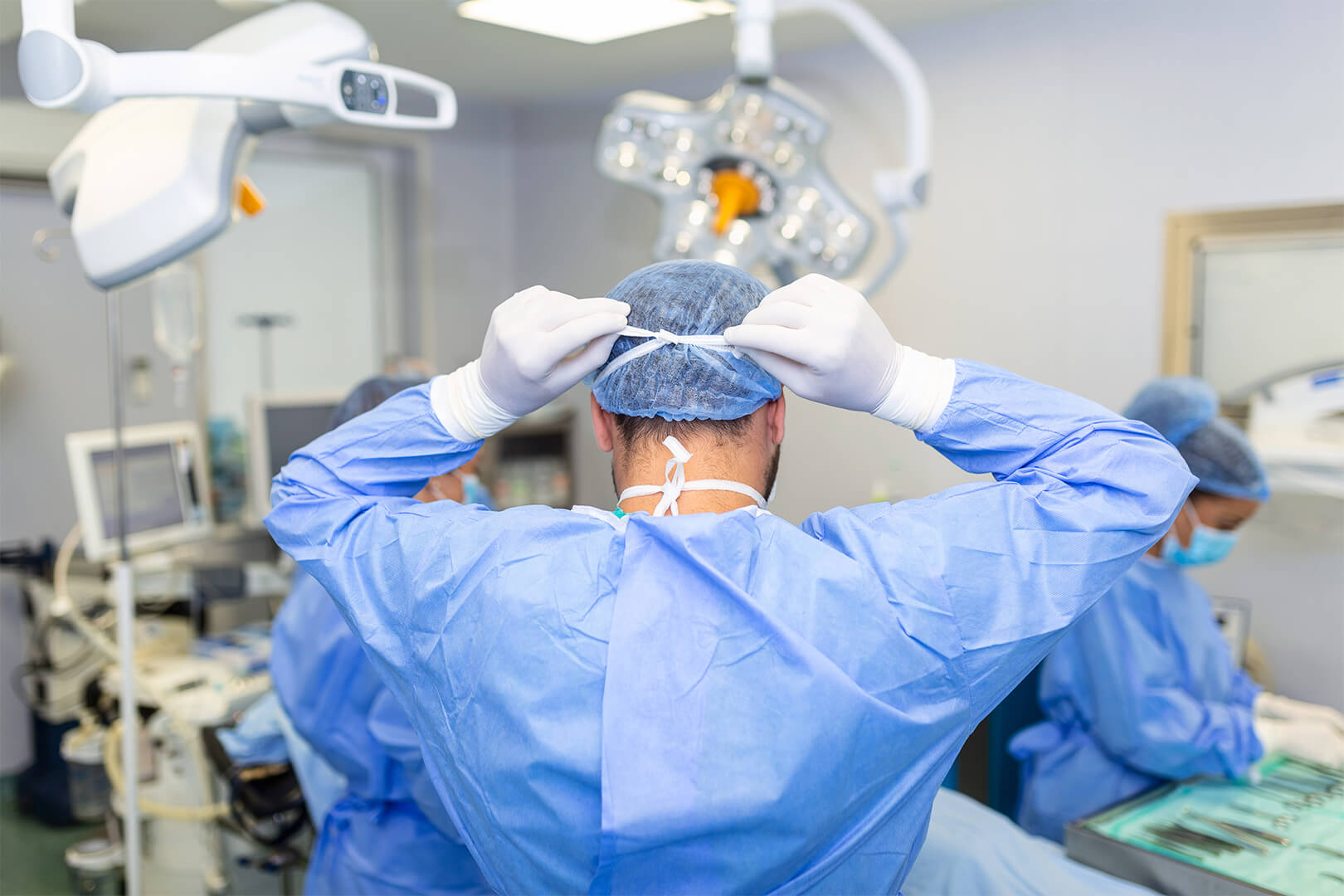
Innovative Surgical Techniques
Recent advancements in surgical techniques have significantly improved the outcomes for patients with eyelid asymmetry. One noteworthy method is the laser-assisted blepharoplasty. This procedure uses laser technology to precisely remove excess skin and orbital fat, minimizing the risk of complications and enhancing recovery times.
Another important technique is the transcutaneous lower eyelid blepharoplasty. It involves excising fat through an external incision. Surgeons often perform skin markings in a sitting posture to ensure accuracy. This method has been praised for its safety and effectiveness in contouring the lower eyelid, thereby addressing asymmetries that develop due to aging.
Breakthroughs in Medication
Although surgical techniques are often the go-to solution, medications play an essential role in managing eyelid asymmetry, particularly in minimizing inflammation and enhancing healing post-surgery. Anti-inflammatory drugs are commonly prescribed to reduce swelling and promote quicker recovery.
Additionally, advances in injectable fillers are also noteworthy. These fillers can temporarily correct asymmetries without the need for invasive surgery. They work by adding volume to areas that lack symmetry, providing an immediate, though temporary, solution.
Technological advancements in software, like the use of ImageJ, have also enabled better preoperative planning. They assist surgeons by accurately measuring variables like MRD1 (marginal reflex distance 1) and brow fat span, helping tailor the surgical or medicinal approach to each patient’s unique needs.

